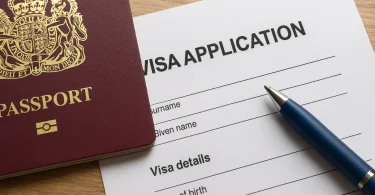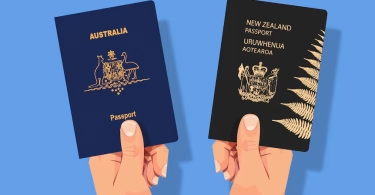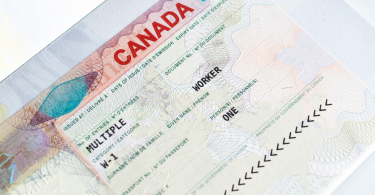Skilled migration to Finland offers a clear path for professionals seeking new work opportunities in Europe. The Finland work visa, especially the Finland D visa for 2025, is designed for those who want to live and work in the country legally. The cost to apply for skilled migration starts from approximately €2,000 ($2,170), covering application fees and other necessary expenses.
Understanding the full cost breakdown helps applicants plan their budget effectively and avoid surprises. Moving to Finland means joining various industries with strong demand for skilled workers. This makes it an attractive destination for those who want to build a career and experience a high standard of living.
This blog post breaks down the key costs involved in the application process and offers tips to improve success rates. Readers will also find essential steps for applying and the benefits of starting this migration journey now.
Key Takeways
- The skilled migration application to Finland costs around €2,000 ($2,170).
- Finland’s D visa allows legal work and stay for qualified professionals in 2025.
- Proper planning and understanding the process increase chances of approval.
Overview of Finland Work Visa Options
Finland offers several visa types to support foreign workers, especially skilled migrants. The application process involves clear eligibility rules and specific work permits tailored to different job sectors.
Types of Finland Work Visas in 2025
The main work visas in Finland include the Residence Permit for Employment, the Specialist Permit, and the D Visa for long stays.
- Residence Permit for Employment: Most common for those with a job offer.
- Specialist Permit: For highly skilled workers like engineers and IT professionals.
- D Visa: A long-term visa allowing stay over 90 days, often for work or study.
Each visa varies in processing time and required documents. Work permits typically allow staying up to a year and can be extended. The D Visa serves as both entry permission and residency authorization for longer stays.
Who Should Apply for a Finland D Visa
The Finland D Visa is best for non-EU nationals planning to stay longer than 90 days for work, study, or family reasons. It allows the holder to reside and work legally without switching visas frequently.
Applicants needing to enter Finland for employment with contracts lasting over three months must apply for this visa. It is also suitable for people relocating with their families or those intending to look for a job after arrival. The D Visa can be a first step to permanent residency if applicants meet prolonged residence requirements.
Eligibility Criteria for Skilled Migration
Applicants must have a valid job offer from a Finnish employer, with the position matching their skills. Jobs in technology, healthcare, and engineering are in high demand.
They need to show proof of professional qualifications, relevant work experience, and the ability to support themselves financially. Criminal record checks and health insurance are additional requirements.
Non-EU workers must prove that their salary meets the Finnish minimum standards for their job type. Meeting these criteria increases chances of approval for a work visa or residence permit.
Cost Breakdown for Skilled Migration to Finland
Skilled migration to Finland involves several key costs. These include visa fees, legal or consultation expenses, and costs linked to relocating and settling in Finland. Each category impacts the total budget required for a successful application and move.
Visa Fees and Application Costs
The core expense for skilled workers is the visa application fee. For Finland’s work visa, the fee depends on how it’s submitted. An electronic application costs around €490 while a paper application is about €690. These fees cover the processing of permits needed to live and work legally in Finland.
Other related fees might include biometric data collection or expedited processing, but these vary by case. Applicants must also budget for any document translations or certifications needed to meet visa requirements.
Legal and Consultation Expenses
Many migrants hire legal experts or immigration consultants to help navigate Finland’s application process. These services can range from €500 to over €2,000, depending on the complexity and firm.
Professional help may improve chances of approval by ensuring documents meet Finnish standards and deadlines are followed correctly. However, legal advice is optional if applicants feel confident handling the process themselves.
Relocation and Settlement Charges
Moving to Finland includes travel, housing, and initial living expenses. A one-way flight can cost between €200 and €800, depending on origin. Temporary housing may be needed before securing permanent accommodation.
Settling costs include deposits, furnishing a home, and basic supplies. Initial expenses can add up to €1,000–€1,500 or more depending on location and personal needs. Budgeting for these helps avoid surprises after arrival.
Step-by-Step Finland D Visa Application Process
The Finland D visa requires specific documents, careful submission, and a defined timeline for processing. Applicants should follow clear steps to ensure their application is complete and timely. Understanding these elements helps avoid delays and increases the chance of approval.
Required Documentation
Applicants must provide several important documents. Key items include a valid passport, a signed employment contract from a Finnish employer, and proof of professional qualifications. Evidence of sufficient financial means to support the stay in Finland is also necessary.
Additional documents may include a recent passport photo, a completed visa application form, and proof of health insurance covering the entire stay. For some roles, such as specialists or managers, a detailed job description may be required. All documents should be original or certified copies and translated into Finnish, Swedish, or English when needed.
How to Submit Your Application
The application is submitted online through the Finnish Immigration Service’s (Migri) digital platform. Applicants must create an account, fill out the form, and upload the required documents. Any missing information can delay the process.
After completing the online application, applicants usually need to visit a Finnish embassy or consulate to provide biometrics (fingerprints and photo). This appointment confirms identity and finalizes the application.
Payment of the €2,000 (approx. $2,170) application fee is required during submission. Payment methods vary by location but often include credit card or bank transfer.
Expected Processing Timeline
The Finland D visa processing typically takes about 10 to 14 calendar days after submitting the biometric data and all documents. Processing times depend on the applicant’s country of origin and the time of year.
Fast-track options may be available for qualified professionals with urgent employment needs. However, incomplete or incorrect applications can extend the timeline. Applicants are advised to apply well before their planned travel date to allow for any extra processing time.
Once approved, the visa holder can enter Finland and begin working under the terms of their permit.
Work Opportunities and Popular Industries in Finland
Finland offers skilled migrants a variety of job options, especially in fields with labor shortages. The demand centers on sectors like healthcare and technology, while employment trends show growth in service-related roles and opportunities for international professionals.
Sectors in Demand for Skilled Migrants
Key industries seeking skilled workers include:
- Healthcare: Nurses, doctors, and caregivers are in high demand due to an aging population.
- Information Technology: Software developers, system analysts, and cybersecurity experts are needed.
- Engineering: Mechanical, electrical, and civil engineers have good prospects.
- Education: Teachers, especially in STEM subjects, are required at various levels.
- Skilled Trades: Electricians, plumbers, and construction experts are sought after.
These sectors offer stable salaries and benefits, making them attractive for migrants. Finland’s work culture is known for a good balance between work and private life, which appeals to international talent.
Employment Trends in 2025
In 2025, Finland continues to face labor shortages across many fields. The public sector, including health care and education, actively recruits qualified professionals.
Service industries dominate employment, involving both government and private companies. New work permit policies aim to speed up the hiring of foreign skilled workers, making the process smoother than before.
Finland’s economy supports more than 100,000 vacancies for skilled migrants. Job seekers with a Finland work visa, particularly the D visa, have growing chances in technology and healthcare jobs due to rising demand for expertise.
Migration to Finland for work offers access to a strong social system and a high quality of life, which plays a role in attracting foreign workers.
Planning Your Move: Essential Considerations
Moving to Finland for skilled work requires careful planning around where to live and how much daily life will cost. Accommodation options vary by city and budget, while living expenses depend on location and lifestyle. Knowing these details helps migrants prepare financially and settle smoothly.
Accommodation and Housing Solutions
Finding housing in Finland can be challenging, especially in Helsinki, Espoo, and Tampere, where demand is high. Options include rental apartments, shared flats, and student housing for those also studying.
Rent prices vary: a one-bedroom apartment in Helsinki can cost around €900 to €1,200 per month. Outside the capital, prices may drop to €600–€800. Long-term rentals usually require a security deposit equal to 1 to 3 months’ rent.
It’s common to find apartments through online platforms like Oikotie or Vuokraovi. Some migrants opt to live initially in shared housing to reduce costs. Early research and applying before arrival improve chances of securing a suitable place.
Living Costs in Major Finnish Cities
Daily expenses in Finland vary with the city. Helsinki, the largest city, has the highest living costs. Groceries, transportation, and dining out are more expensive there than in smaller cities like Oulu or Jyväskylä.
Typical monthly costs excluding rent:
- Food: €250–€350
- Public transport: €60–€70
- Mobile phone and internet: €30–€50
- Utilities (electricity, heating, water): €100–€150
Healthcare is covered under the public system for residents, but private health insurance may be recommended initially. Budgeting around €1,200 to €1,500 monthly (including rent) is realistic for a single skilled worker in Helsinki, with lower costs possible in other cities.
Tips to Improve Your Success Rate
A clear, complete application paired with a strong job offer greatly increases chances of approval. Understanding the key details needed for both steps is essential for anyone applying for a Finland work visa.
Optimizing Your Application
Applicants must ensure all documents are accurate and up to date. This includes submitting official certificates, proof of qualifications, and valid identification. Missing or incorrect documents can delay or deny approval.
It is important to fill out forms carefully and truthfully. Errors or inconsistencies in personal data or employment history raise red flags.
Applicants should also highlight their skills relevant to the Finnish job market. Tailoring the application to match the employer’s needs can improve chances.
Meeting all visa fee payments on time and following instructions from Finnish immigration authorities avoids unnecessary delays.
Securing Employment Offers
Having a signed job contract or formal offer is critical. It must clearly state job title, salary, length of the contract, and employer details.
Applicants should focus on jobs that fit their skills and experience, preferably in sectors where Finland has labor shortages like IT, healthcare, or technology.
Networking and applying directly through Finnish company websites or official job portals often lead to better opportunities.
Employers familiar with Finland’s immigration rules tend to provide stronger support letters and documents that immigration officials value.
Clear communication with the prospective employer about visa requirements helps avoid misunderstandings during the application process.
Long-Term Benefits of Migrating to Finland for Work
Migrating to Finland for work offers clear opportunities for those seeking stability and career growth. Skilled workers can find structured paths to permanent residency and experience smooth social integration. These benefits support a secure and fulfilling life in Finland.
Pathways to Permanent Residency
Finland provides several routes to permanent residency for skilled workers. After living and working in Finland continuously for four years with a valid residence permit, applicants can apply for permanent residency.
Applicants must prove their income meets Finland’s minimum requirements and show they have integrated into Finnish society. Language skills and knowledge of Finnish culture may strengthen the application.
Permanent residency allows the holder to live, work, and study in Finland without restrictions. It also offers better access to social benefits. This status is a key goal for many who want long-term security in Finland.
Professional Growth and Social Integration
Finland’s work visa system supports career development through access to a range of industries experiencing skill shortages, such as IT, healthcare, and engineering.
Workers can participate in professional training and education programs to enhance skills. Finnish employers value continuous learning, making advancement possible.
Social integration is encouraged through community programs and language courses, helping migrants adapt to the culture and build networks. Finland’s inclusive society promotes equality and respect for diversity, which aids newcomers in settling well.
Apply Now: Getting Started with Your Migration Journey
To start the migration process to Finland, applicants first need to check their eligibility. Citizens of the EU, Iceland, Norway, Liechtenstein, and Switzerland do not require a work permit but must register with the tax office once they begin working. Others will need to apply for a Finland work visa or a Finland D visa 2025.
Applications are handled through the Finnish Immigration Service’s online portal called Enter Finland. This service allows users to manage nearly all permits and citizenship matters online. It guides applicants step-by-step through form completion, reducing errors and delays.
Applicants should prepare the following before applying:
- Valid passport
- Job offer or contract from a Finnish employer
- Completed application form on Enter Finland
- Required application fee (starting from around €2,000 or $2,170)
- Proof of health insurance (if applicable)
Processing times have improved recently thanks to new policies, with faster decisions available for skilled workers.
After submitting the application, applicants can track their status online. During this period, it is important to keep all documents updated and respond quickly if additional information is requested.
Starting early and following official instructions ensures a smoother journey for those wishing to migrate to Finland for work.






